Laundry hacks that will save you time and money
These laundry tips will save you time and energy
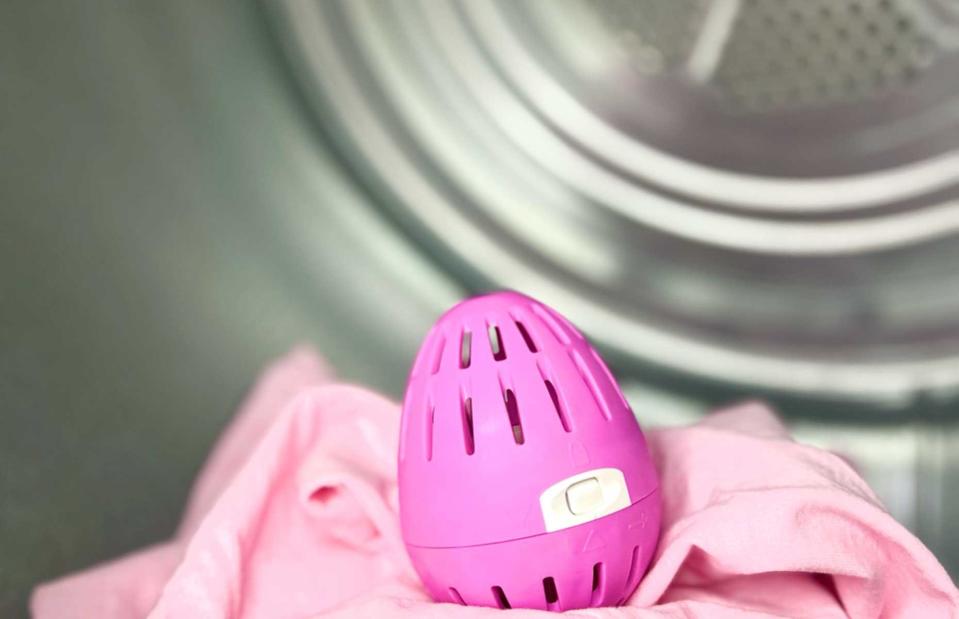
EcoEgg
Sorting, washing, drying, folding and storing, there is usually at least one part of the never-ending laundry routine that we don't enjoy. To make the household chore not such a bore we've listed tips, tricks and shortcuts to lessen the laundry load time. From money-saving washing gadgets to clothes-drying hacks we wish we'd thought of sooner, check out these laundry hacks to swear by...
Separate from the start
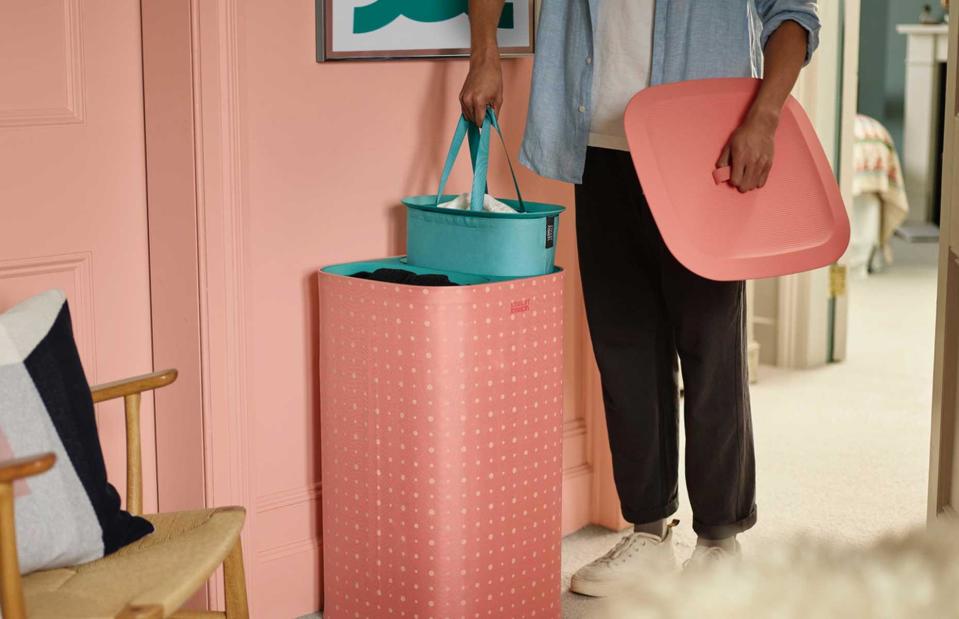
Joseph Joseph
Separating laundry into different bins as soon as you get changed will save lots of time and will cut out the not-so-pleasant task of rooting through other people's laundry. It also helps keep clothes looking new for longer as dark colours won't bleed into lighter colours.
Invest in a dehumidifier
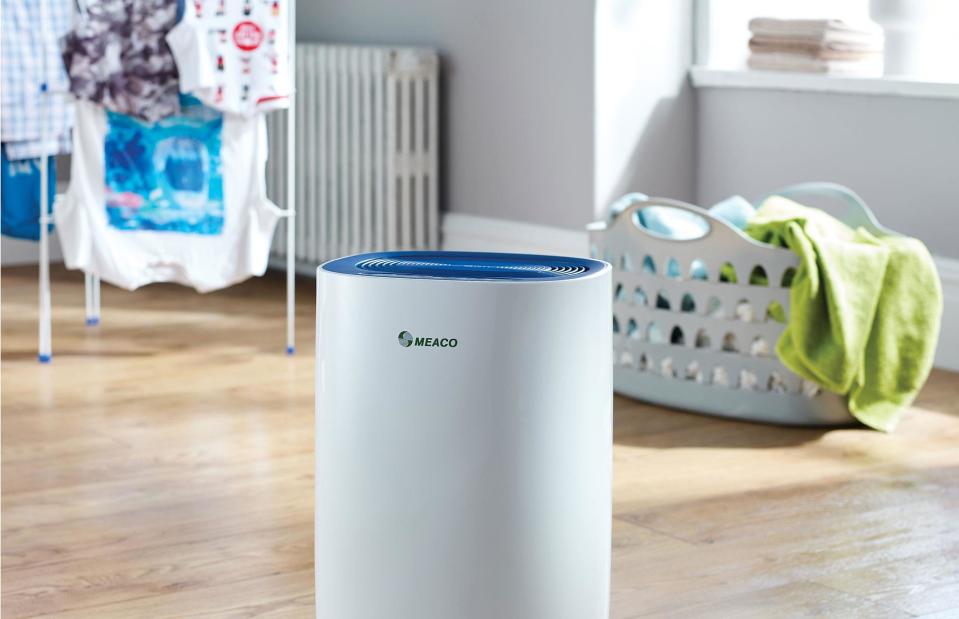
Meaco
A dehumidifier can be a winter laundry saviour. The early noisy, heavy and energy-zapping models have now been replaced with more quiet and energy-efficient designs. They cleverly suck in moisture created by indoor laundry, cutting drying times and lowering the chances of mould and mildew forming by far.
Protect delicates
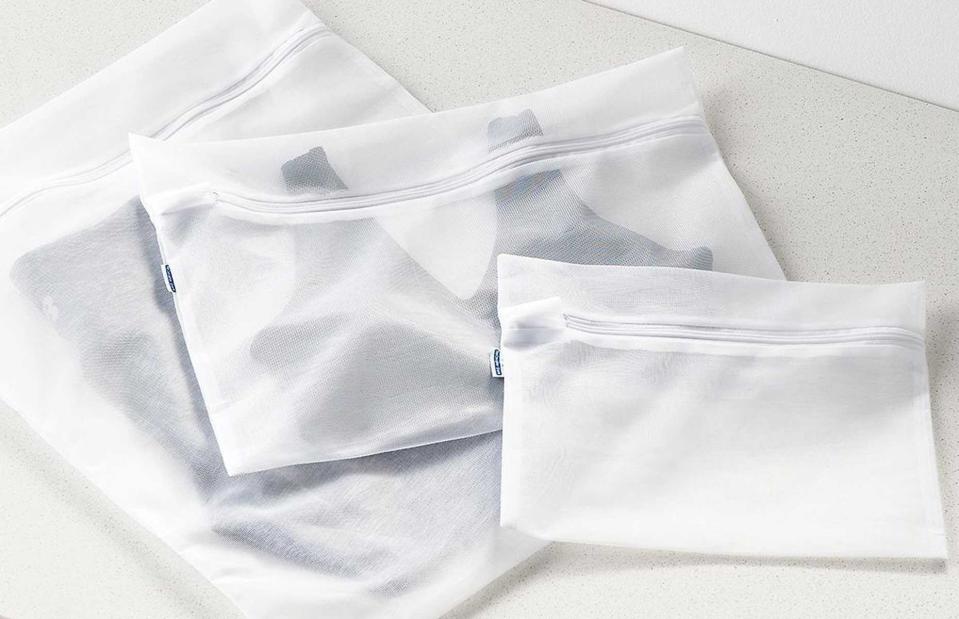
The Container Store
Don't leave your delicates crumpled at the bottom of your laundry basket, treat them with the care they deserve by washing them with a kind hand-wash detergent. If they can handle a machine wash be sure to put them inside a net laundry bag (or a cotton pillowcase works too). Wash them on a cold wash and low spin and if possible lay them flat to dry.
Use a heated airer
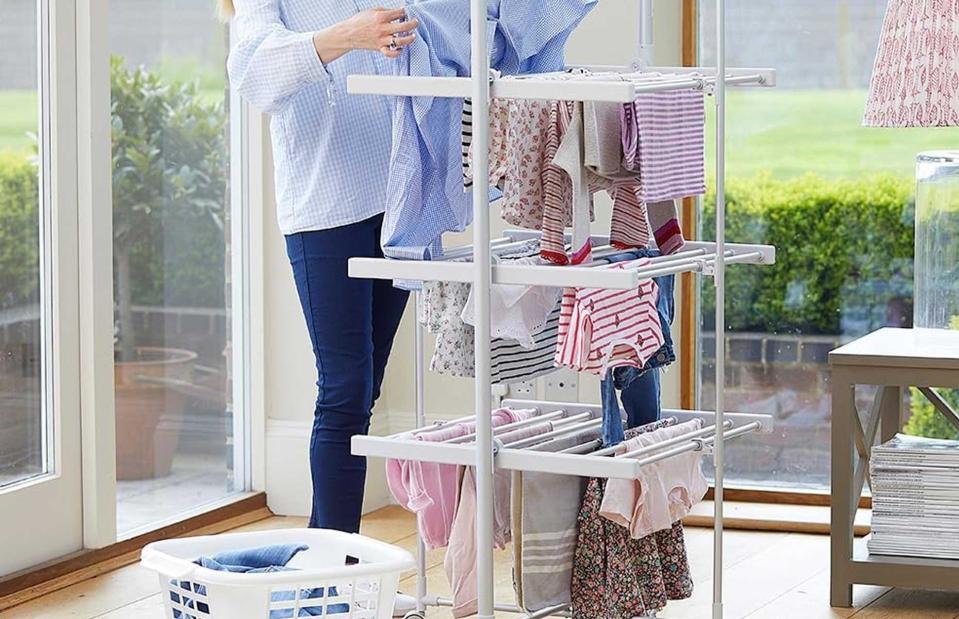
Easylife / Amazon
According to the Lakeland Trends Report for 2023, people are trying to cut down on laundry costs up and down the country. The running costs of heated airers are about one-eighth of those of a tumble dryer so it's no wonder that their sales of heated airers rose by 51%. Heated dryers come in all shapes and sizes and are a speedy indoor drying solution when conditions are not ideal for outdoor drying.
Use a laundry egg
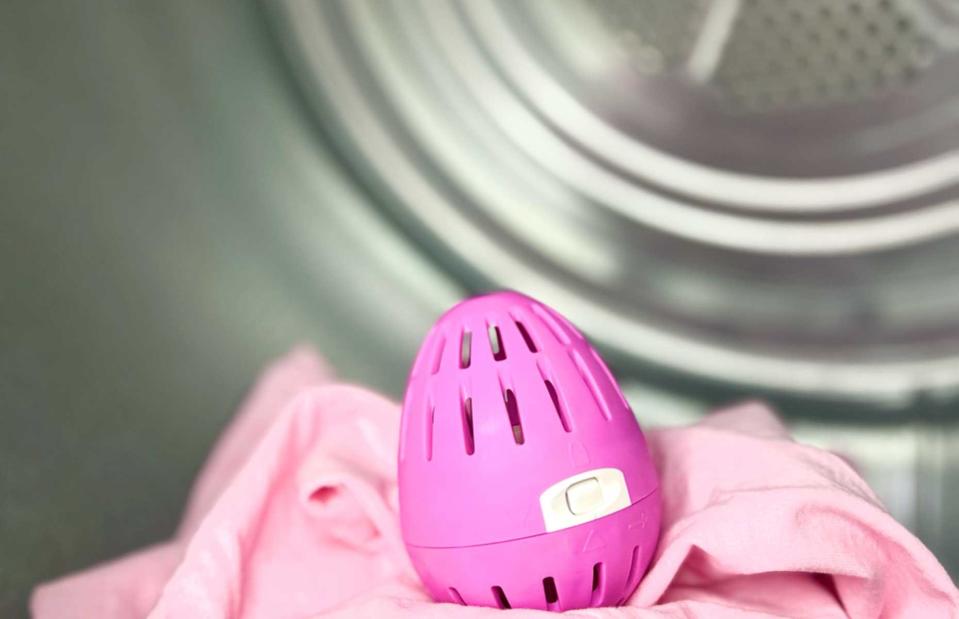
EcoEgg
These little money-saving egg-shaped gadgets are filled with detergent pellets that clean with a reportedly more environmentally and skin-friendly wash. EcoEgg claim that if you switch to a laundry egg you could save up to 40 bottles of plastic detergent bottles per year. And if you think that is 'egg-cellent' EcoEgg dryer balls can apparently cut a tumble dry cycle by 28%. Cleaning influencer, Lynsey Crombie AKA @lynsey_queenofclean is a fan of similar Boss It Rapid-Dryer Balls that can reduce drying times by 40%.
Install a drying rail
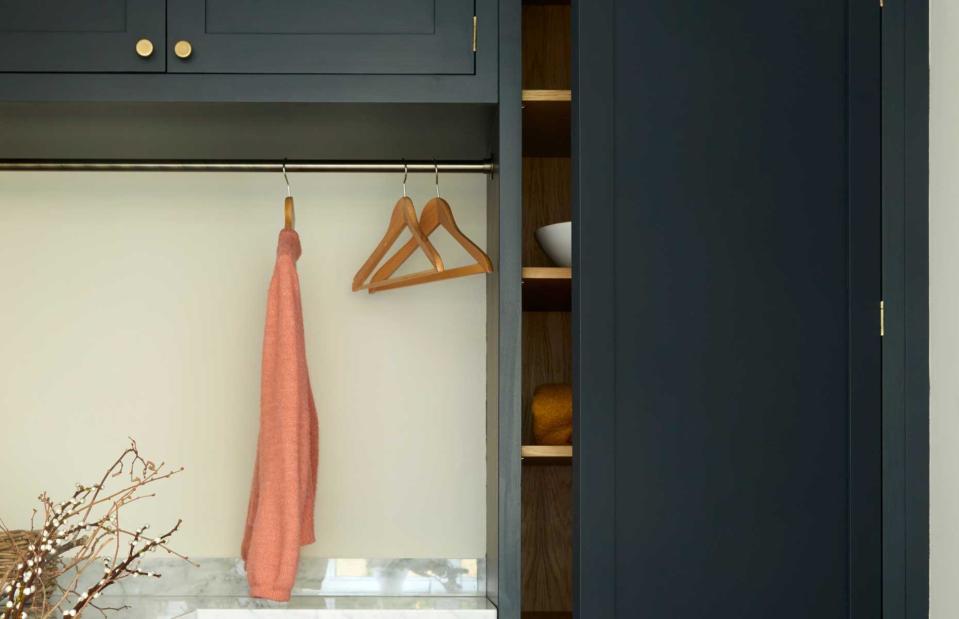
Olive & Barr
If you are lucky enough to own a utility room make sure a built-in drying rail set above the sink is included in the design. As a cheat hang an extra shower curtain rod along the top of your bathtub or shower, then use it to dry wet clothes from hangers. Any excess water will drip down the bath plug. Open a window to make sure the room is well-ventilated while drying.
Upcycle a laundry cupboard
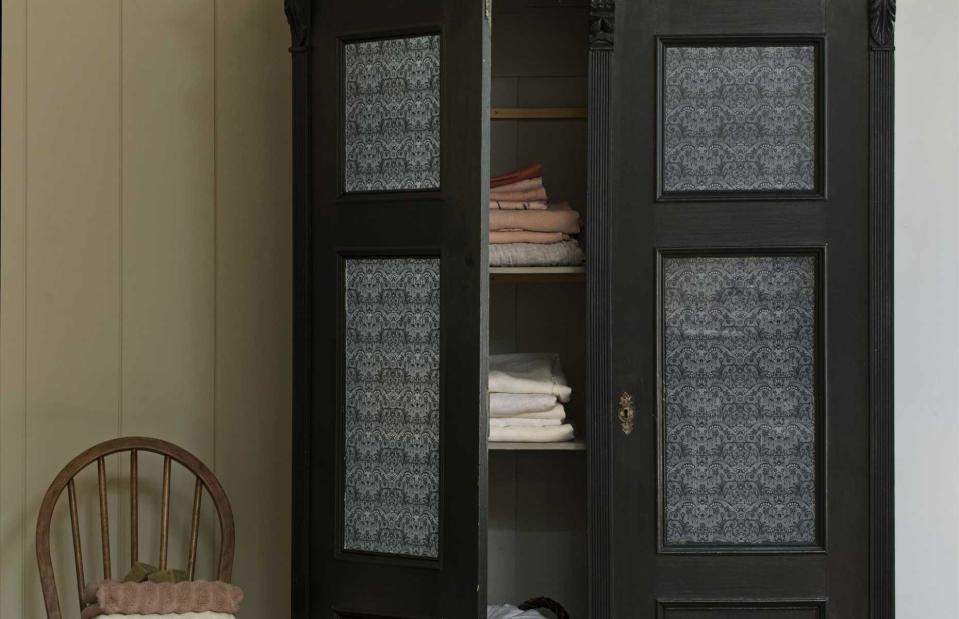
Purlfrost
Once your clothes are freshly laundered and folded ensure they stay that way until needed with suitable linen storage. If you don't own an airing cupboard here's an idea to transform your old furniture into something useful. This glass display cabinet is now super practical with a smart lick of dark paint and frosted window film.
Install a classic clothes airer
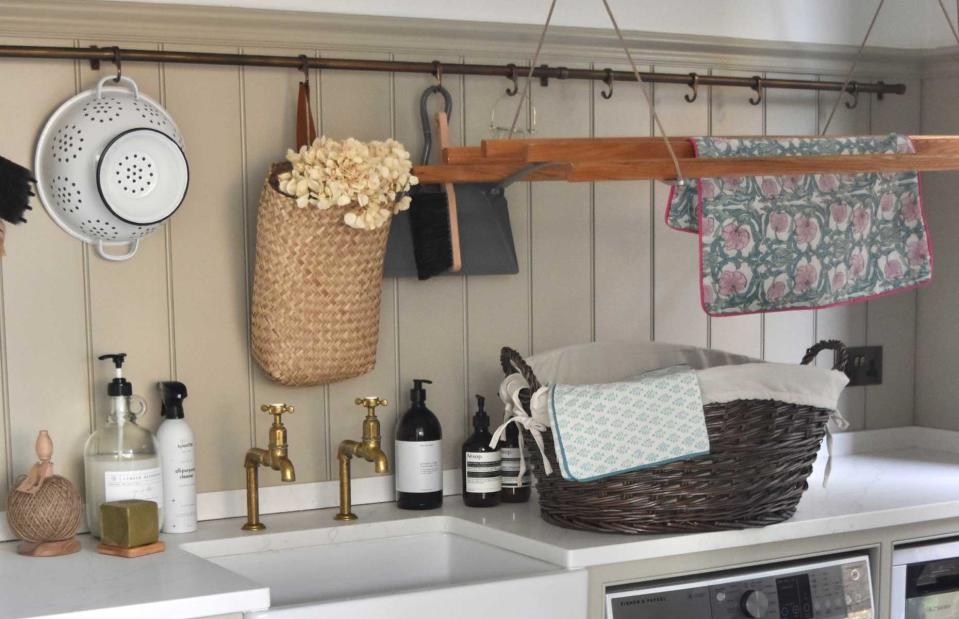
Fisher & Paykel
The ceiling dryer has been a tried and tested practical laundry aid used for centuries. Usually designed with four wooden laths suspended between cast iron rack ends, the clothes rack can be raised to the ceiling to dry clothes out the of way and then lowered with a pulley system. With cottagecore a current hot trend it makes a fabulous farmhouse decorating idea that's practical. Ensure clothes are thoroughly rung before hanging up.
Pop a laundry bin in the bedroom
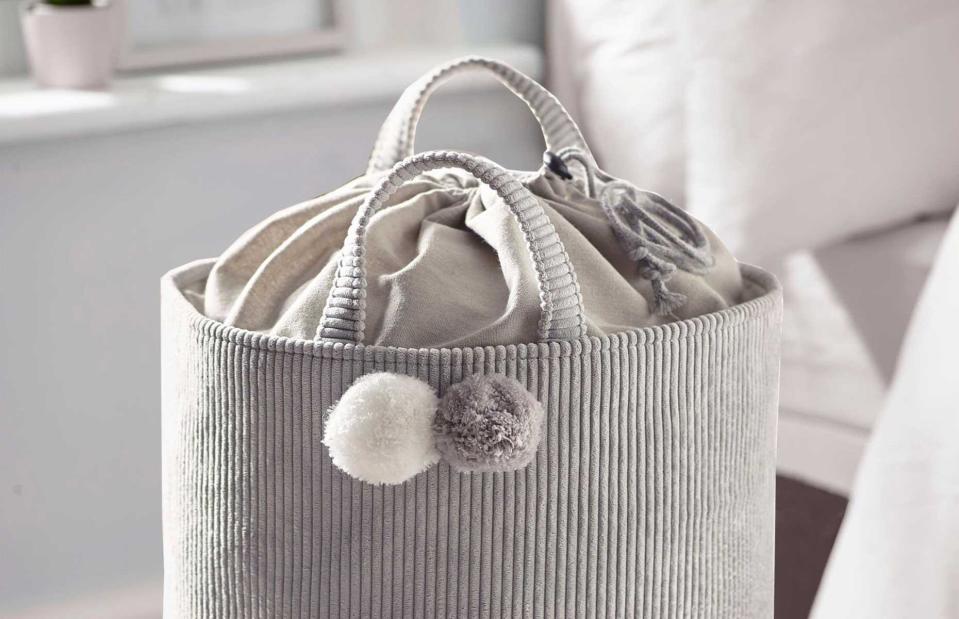
Next
Owning just one laundry bin is an organising mistake that could make your home messier. Make laundry day smooth by adding a bin to bedrooms (especially teenage bedrooms) and if possible bathrooms and utility rooms too.
Dry in the bathtub
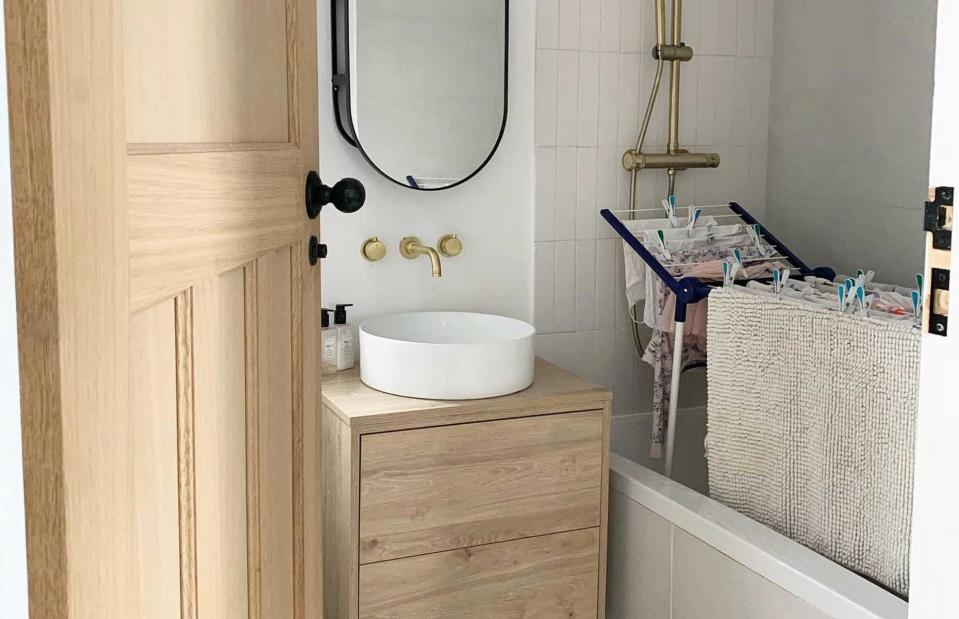
@homeiswherepenarthis / Instagram
When floor space is at a premium opt for an over-bath drying rack like @homeiswherepenarthis uses in her super stylish bathroom. Designed to fit into the narrow widths of tubs and fitted with soft grips it won't scratch surfaces. The folding drying rack is yet another money-saving option if you don't want to turn on the money-guzzling tumble dryer. Remember to open a window to ventilate the bathroom while drying laundry.
Put the washing out in the rain
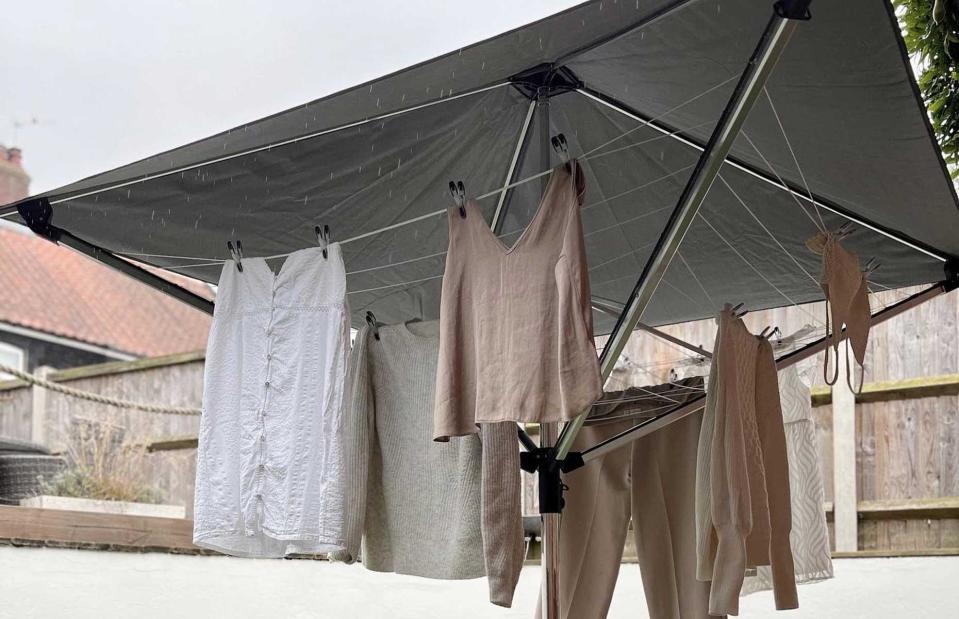
@our_oaktree_home / Instagram
Before you put the rotary washing line away for winter – stop! A LinoProtect rotary line (or similar product) with a protective canopy allows you to give your clothes that outdoor laundered freshness even during a downpour. It probably won't fully dry laundry when its raining due to moisture and dampness lingering in the air. But, on days forecast with sunny intervals and showers, it will be a godsend. Instagrammer @our_oaktree_home is super impressed with how easy to use the protector is.
Decant detergent

B&M Stores
Decanting laundry detergent into labelled glass storage bottles is a brilliant utility room idea as not only will it make your laundry room or cupboard look streamlined and orderly it also means you can ditch purchasing plastic bottles for more environmentally friendly and money-saving refill pouches.
Make your own laundry supplies
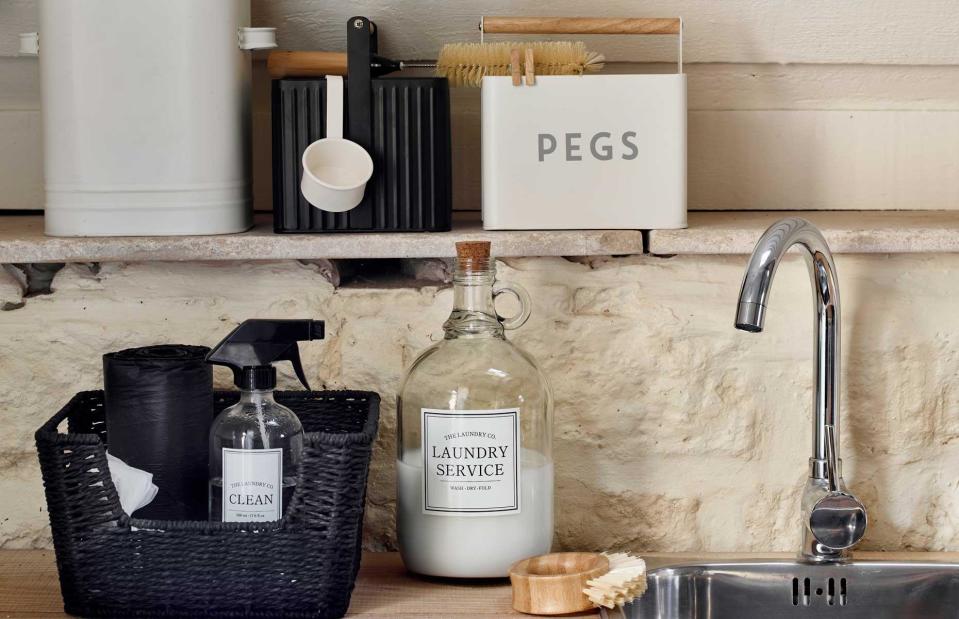
Matalan
Rather than decant shop-bought detergent into environmentally friendly storage bottles, why not have a go at making your own laundry detergent?
Store cupboard essentials are ideal for this. In The Wash has a great 'recipe'. Pour 200g of soda crystals into a bowl and slowly add 500ml of boiling water. Stir the mixture until all the crystals have dissolved. Whilst stirring, add in 50g of bicarbonate of soda a little at a time. Add 120ml of liquid soap, 1.5 litres of boiling water, and up to 10 drops of essential oils (if using). Stir until well distributed and then leave to cool. Whisk the detergent until it is smooth and then pour it into your storage container.
Once you’ve bottled up your DIY liquid detergent, store it in a cool place with no direct sunlight.
Add an extra spin to your wash

Armac Martin
Clothes coming out too wet? Give your garments or bedding an extra spin in the washing machine to ensure as much moisture is removed from them as possible. This will help reduce drying times when using the tumble dryer or speed up line or indoor drying if a tumble dryer is not an option.
Always keep socks together
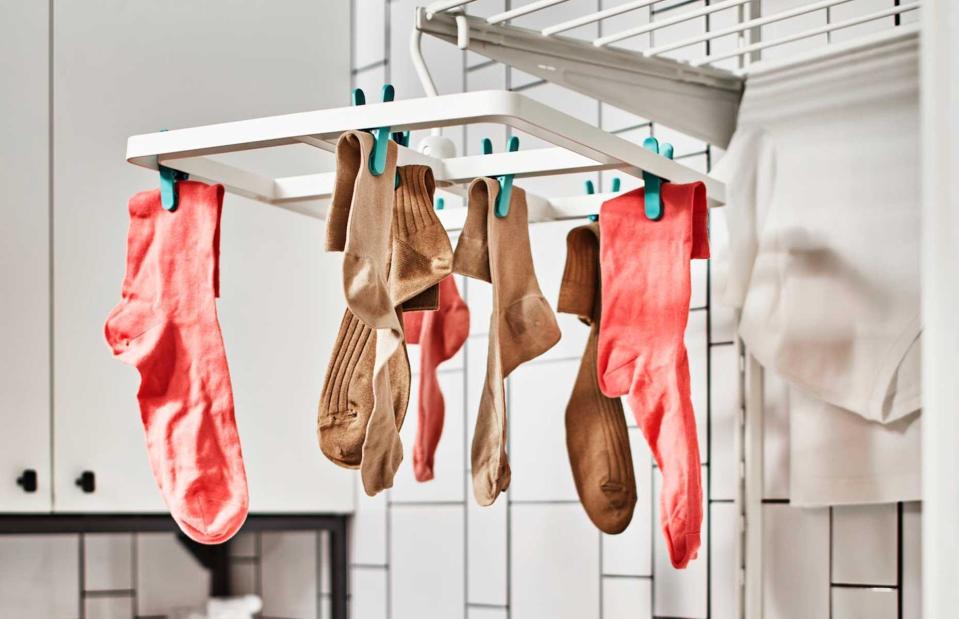
IKEA
Missing socks are a laundry conundrum that beats the best of us. Here are a few tricks that might stop the search for the missing socks forever. Safety pin them together during washes, use a laundry mesh bag, or simply just put on a wash of socks so you can keep track of them. Alternatively, dry them on a small clothes airer and fold them together as soon as they are dry.
Keep the washing machine clean

Fast-stock / Shutterstock
Giving your washing machine a clean is a task that should be added to your seasonal deep clean list. Clean the detergent drawer by removing it if you can. Clean inside the door seal and check the filter is free from blockages. There are anti-bacterial washing machine cleaners you can run through your machine to remove hidden dirt and any build up.
Choose a natural cleaning method
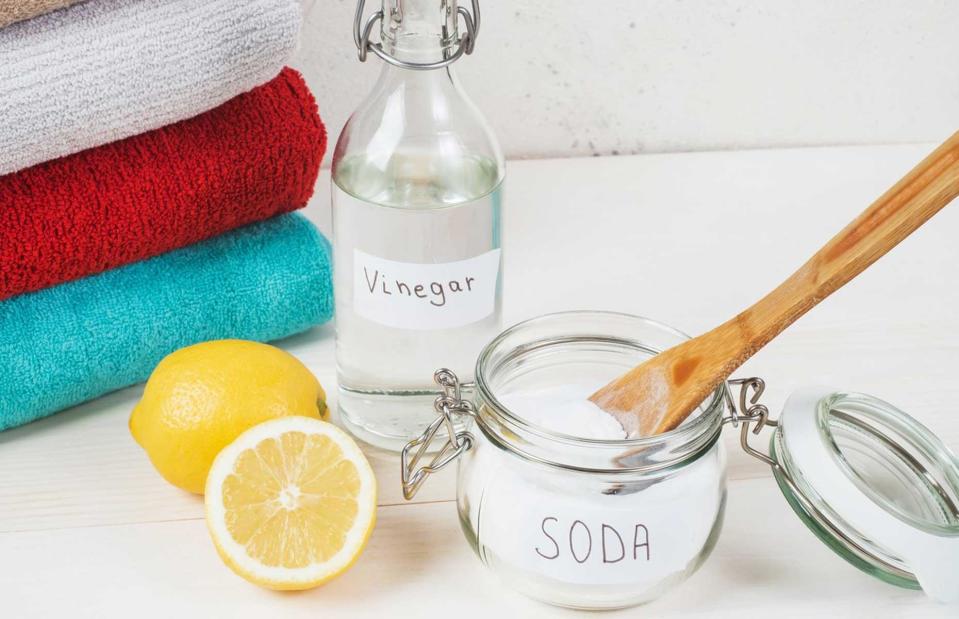
HalynaRom / Shutterstock
Vinegar when added to the detergent softener drawer (so it's diluted) is as tough as any shop-bought washing machine cleaner and bicarbonate of soda will unclog whilst being non-toxic. Always do your research first, but many essential cupboard staples are natural alternatives to cleaning products. Grandma would approve!
Use a dishwasher tablet on stains
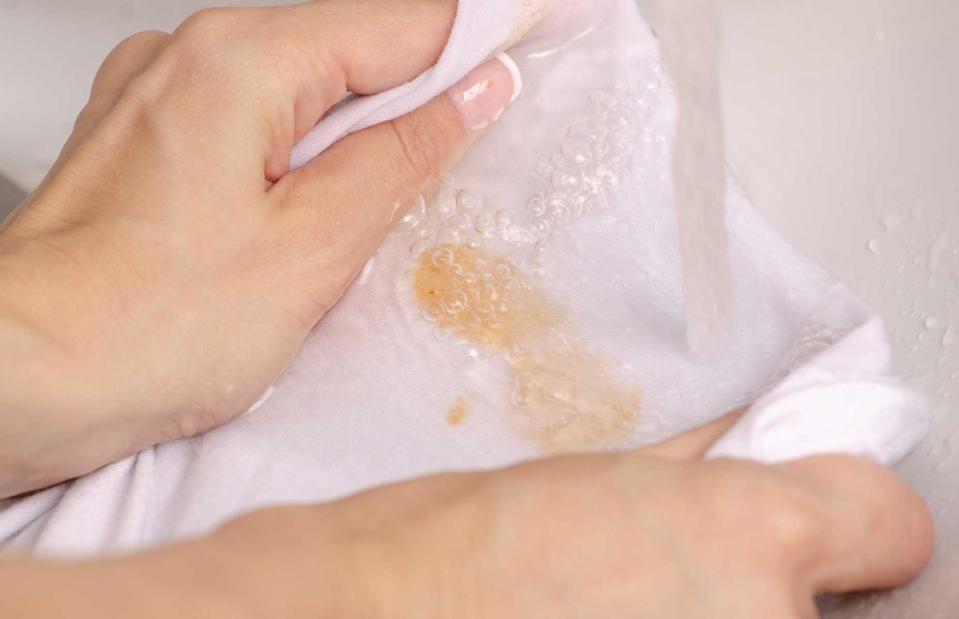
Kabardins Photo / Shutterstock
Did you know that dishwasher tablets work just as well on stains as they do on dishes? The salt in dishwasher tablets works hard to remove marks from laundry when applied directly to the stain only. However, dishwasher tablets contain phosphates, enzymes and bleach so it is wise to patch test and dilute the tablet first. Also, this method is not advised if your family are prone to skin allergies.
Follow care labels
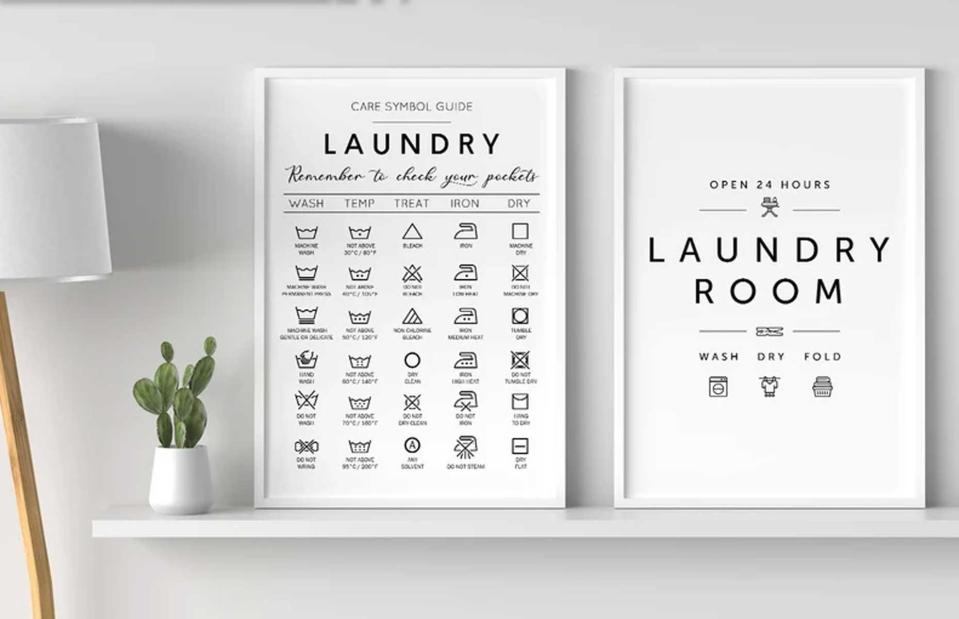
Hues & Reflections / Etsy
Knowing your garment wash label symbols will make wash day a breeze. They may at first seem confusing however the illustrations are quite simple to understand. A tub filled with water means the garment is suitable for machine washing, while the numbers inside the tub refer to the temperature required. One line under the tub means clothes need a synthetic cycle. Two lines equal a gentle wool wash. A hand in the tub means hand washing is recommended. Red symbols mean do not wash or do not ring out. To review a full label care guide visit Ariel.
Learn the art of folding

IKEA
Folding clothes right after they have been laundered will not only keep them fresher and crease-free for longer but will make the most of your storage solutions too. Folding clothes as soon as the dryer cycle is finished has many advantages. Warmth makes the fabric softer and more flexible, making it easier to fold neatly without having to remove wrinkles, meaning less ironing. Cleanfluencer Mrs Hinch took to her Instagram @mrshinchhome feed to share a top laundry storage tip: pop a dryer sheet in your drawers to keep clothes smelling fresh after washes.
Love cleaning? 20 ways to stop germs and viruses from spreading in your home


